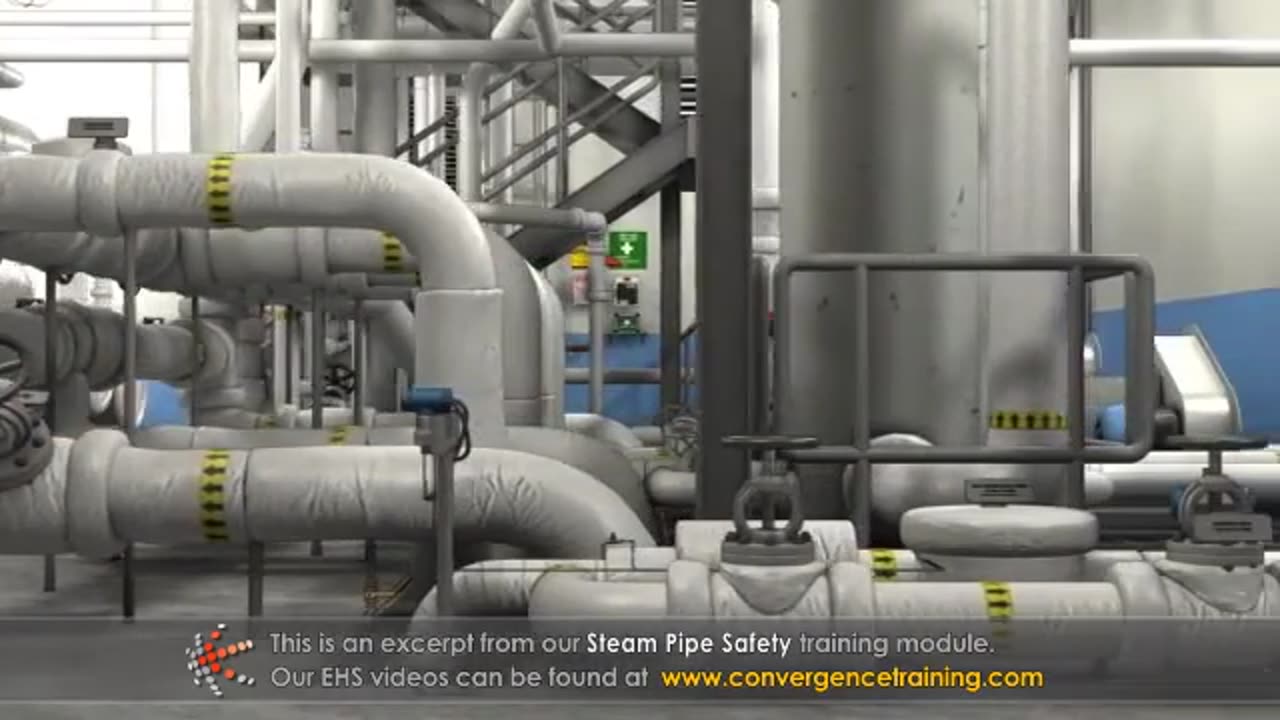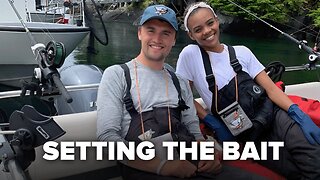Premium Only Content

Steam Pipe Safety Training
**Steam Pipe Safety Training** is critical to prevent injuries and ensure the safe operation of systems involving high-pressure and high-temperature steam. This training focuses on recognizing hazards, following safe work practices, and knowing emergency protocols. Below is a detailed guide:
---
### **1. Objectives of the Training**
- Educate workers about the risks associated with steam pipes.
- Teach safe handling, maintenance, and inspection procedures.
- Highlight emergency response actions for steam-related incidents.
- Promote compliance with safety regulations and standards.
---
### **2. Common Hazards with Steam Pipes**
- **High Temperatures**: Direct contact can cause severe burns.
- **Pressure Hazards**: Pipe bursts or leaks can release high-pressure steam.
- **Condensate Burns**: Hot water formed in pipes can cause scalds.
- **Noise and Vibrations**: High-pressure steam flow can create dangerous noise levels and vibrations.
- **Pipe Failures**: Corrosion, wear, or improper maintenance can lead to leaks or explosions.
---
### **3. Personal Protective Equipment (PPE)**
- **Mandatory PPE**:
- Heat-resistant gloves.
- Safety goggles or face shields (protect eyes from steam or debris).
- Long-sleeve, flame-resistant clothing.
- Steel-toed boots.
- **Optional PPE**:
- Hearing protection in high-noise areas.
- Respirators if working in enclosed spaces with possible steam or vapor exposure.
---
### **4. Key Safety Practices**
#### **a. Installation and Design**
- Ensure steam pipes are designed to withstand operating pressure and temperature.
- Install pressure relief valves to prevent over-pressurization.
- Use proper insulation to minimize heat transfer and protect workers.
#### **b. Inspection and Maintenance**
- Perform regular inspections for:
- Leaks, corrosion, or worn-out gaskets.
- Damaged insulation or pipe supports.
- Check pressure gauges and temperature indicators for accuracy.
- Maintain proper drainage to prevent condensate buildup.
- Follow a preventive maintenance schedule for valves, joints, and seals.
#### **c. Safe Work Practices**
- Never touch steam pipes or fittings directly; use tools or insulated handles.
- Avoid standing in front of valves or pipe fittings where leaks may occur.
- Depressurize and cool pipes before performing maintenance.
- Tag and lockout steam systems during repairs to prevent accidental activation.
- Use caution when opening valves to avoid sudden steam release.
#### **d. Temperature and Pressure Monitoring**
- Ensure systems have functioning gauges and alarms for temperature and pressure.
- Monitor for abnormal noises, pressure drops, or vibrations, which can indicate issues.
---
### **5. Emergency Preparedness**
- **In Case of Steam Leaks**:
- Evacuate the area immediately.
- Shut off the steam supply from a safe location if trained to do so.
- Report the incident to the supervisor or safety officer.
- **In Case of Burns**:
- Remove the injured person from the source of steam.
- Cool the affected area with cool (not cold) water.
- Seek immediate medical attention.
- **Pipe Rupture**:
- Shut down the system and evacuate the area.
- Do not approach the pipe until it has cooled and pressure has been released.
---
### **6. Regulatory Compliance**
- Adhere to OSHA standards for steam systems and pressure vessels (e.g., OSHA CFR 1910.261).
- Follow ASME (American Society of Mechanical Engineers) codes for piping design and maintenance.
- Ensure compliance with local regulations regarding steam system operation.
---
### **7. Training Delivery Methods**
- **Classroom Training**:
- Use diagrams, videos, and case studies to explain steam pipe components, hazards, and best practices.
- **Hands-On Training**:
- Demonstrate safe operation and inspection of steam systems.
- Practice lockout/tagout procedures on a steam system.
- **Toolbox Talks**:
- Conduct brief sessions on specific topics like handling steam leaks or using PPE.
---
### **8. Follow-Up and Refresher Training**
- Periodically review and update training materials based on incident reports or new equipment.
- Conduct annual refresher courses to reinforce knowledge and skills.
- Audit steam systems regularly to ensure safety protocols are being followed.
---
Would you like assistance in creating detailed lesson plans, safety posters, or checklists for steam pipe operations?
-
 7:58
7:58
HSESafetyInformation
8 months agoAuthentic Peshawari Rosh _ Namkeen Gosht Recipe __ Traditional KPK and Baluchistan
721 -
 DVR
DVR
Kim Iversen
2 hours agoTrump Might Actually Run For A THIRD Term?! | Turbo Cancers Are Rising—Media Pretends It’s Fine
6.24K33 -
 1:09:38
1:09:38
TheCrucible
1 hour agoThe Extravaganza! EP: 60 with Special Guest: Vince Offer (10/27/25)
25.1K2 -
 1:04:18
1:04:18
Candace Show Podcast
3 hours agoCharlie's Angels Or Demons? Disturbing Footage Emerges. | Candace Ep 252
22.2K95 -
 13:53
13:53
Tundra Tactical
2 hours agoGlock Apocalypse - Tundy Meme Review
67 -
 LIVE
LIVE
Jamie Kennedy
15 hours agoThe Macabre Mind of Bill Moseley: Horror, Philosophy & the Spirit of Darkness| Ep 228 HTBITY
59 watching -
 LIVE
LIVE
Wayne Allyn Root | WAR Zone
6 hours agoWatch LIVE: The War Zone Podcast with Wayne Allyn Root
36 watching -
 1:37:49
1:37:49
Redacted News
2 hours agoBREAKING! "LEAVE NOW OR BE ASSASSINATED" CIA BACKED COUP IN VENEZUELA HAS BEGUN | Redacted News
108K46 -
 1:55:47
1:55:47
vivafrei
9 hours agoEp. 288: VIva & Barnes Sunday Night Show... ON A MONDAY! Trump, Gavin, Government Shutdown & MORE!
132K28 -
 28:38
28:38
Standpoint with Gabe Groisman
2 hours agoPrime Minister Netanyahu: Inside Israel's War, Peace and the Path Forward.
16.5K11